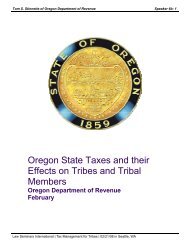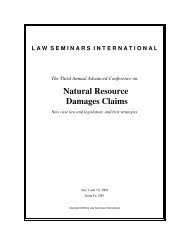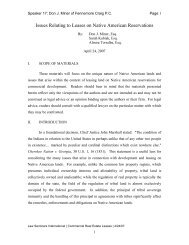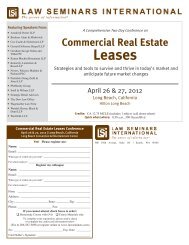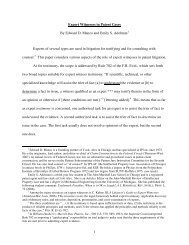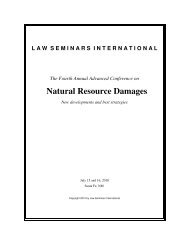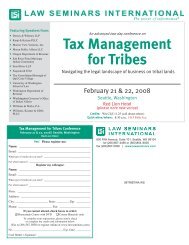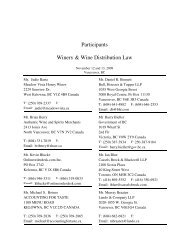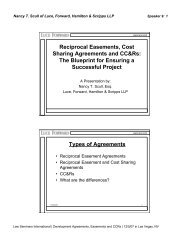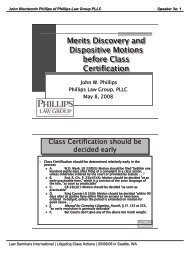LSI 2010 Real Estate Joint Ventures conference materials.pdf
LSI 2010 Real Estate Joint Ventures conference materials.pdf
LSI 2010 Real Estate Joint Ventures conference materials.pdf
Create successful ePaper yourself
Turn your PDF publications into a flip-book with our unique Google optimized e-Paper software.
John W. Hanley, Jr. of Davis Wright Tremaine LLP Speaker 20a: 12<br />
Investment Discretion Limitations. One of the manager’s greatest responsibilities, and<br />
most important authorities, is selection of the real estate assets into which to invest the “blind<br />
pool” fund’s capital. Frequently, the fund charter will grant broad investment authority to the<br />
manager but subject that authority to several different investment power limitations, sometimes<br />
called “investment objectives” or “investment guidelines.” These limitations should be driven<br />
by (and consistent with!) the investment plan described to the prospective investors in the fund’s<br />
offering <strong>materials</strong>. Among the types of limitations frequently found in real estate fund charter<br />
documents are the following:<br />
(a)<br />
geographic limitations;<br />
(b) limitations by product type (e.g., office properties, multifamily properties,<br />
industrial properties);<br />
(c) descriptive prohibitions (e.g., no hotels, no property requiring new construction,<br />
no environmentally-impaired property);<br />
(d) concentration limitations, which limit the amount (usually by percentage) that the<br />
fund’s capital that may be invested in a single asset, thereby promoting diversity; and<br />
(e) minimum and maximum amounts of leverage that may be drawn down to support<br />
any asset acquisition.<br />
As a failsafe to protect the ability of the fund to respond to changing market conditions,<br />
the fund sponsor may also include, in the fund charter, a provision authorizing an investment<br />
advisory committee to approve transactions outside of the stated investment guidelines.<br />
The Advisory Committee. Frequently, a real estate fund will create an advisory<br />
committee composed of a specified number of representatives designated by investors selected<br />
by the fund sponsor (normally those investors with the largest capital commitments to the<br />
enterprise). Sometimes the committee will be composed of representatives selected by all<br />
investors in the fund, using a weighted voting process. This advisory committee will be given its<br />
own “charter,” inside the limited liability company agreement, and that charter may give the<br />
committee any or all of the following responsibilities:<br />
(a)<br />
(b)<br />
authorize divergences from the investment limitations;<br />
approve or disapprove transactions in which the manager has a conflict of interest;<br />
(c) authorize or require early termination or extension of investment period in light of<br />
unexpected market conditions;<br />
(d)<br />
(e)<br />
(f)<br />
approve the fund’s auditor;<br />
approve the fund’s appraiser (if one is needed); and<br />
initiate or approve an early termination of fund, or extension of fund’s term.<br />
11<br />
DWT 13620946v1 0000099-071219<br />
Law Seminars International | <strong>Real</strong> <strong>Estate</strong> <strong>Joint</strong> <strong>Ventures</strong> and Funds | 02/09/10 in Seattle, WA




